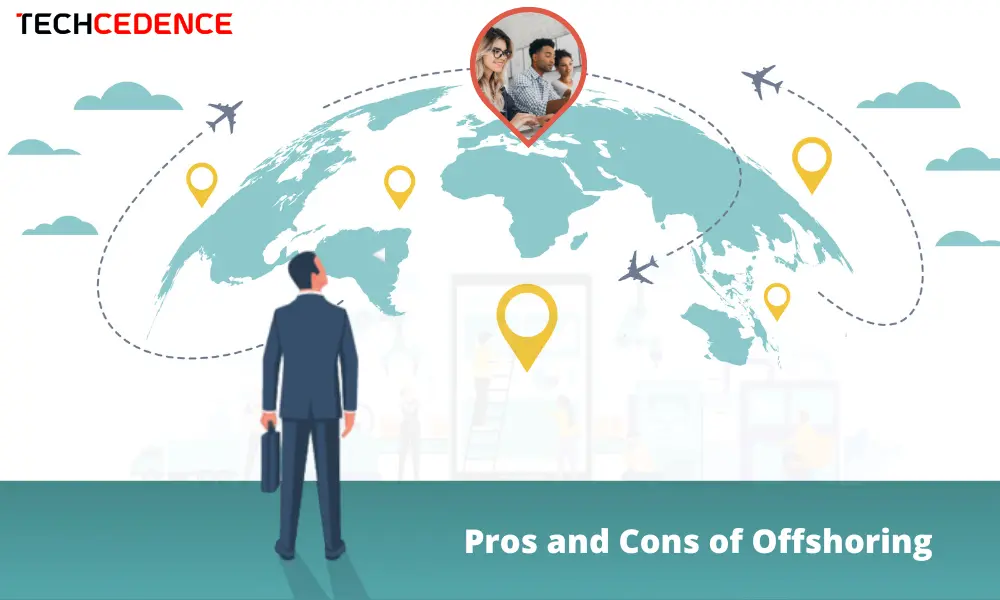Many companies consider outsourcing an effective strategy to manage their ever-growing and evolving IT landscape. And, it isn’t for no reason that they look up to outsourcing. IT outsourcing can help companies save up to 35-40 percent of their overall annual IT costs when planned and executed meticulously. That translates to millions of dollars retained and increased profitability in the long run!
But IT outsourcing isn’t as straightforward as it may appear. It isn’t a tactical move but a strategy that requires a thoughtful approach and the time and effort spent in pre-planning and identifying what matters. If you’ve decided to outsource IT services to an IT outsourcing company, ensure you plan the strategy well and make decisions that deliver tangible results. Here are some guidelines that can help.
5 Guidelines to Create a Useful IT Outsourcing Strategy
Here are some elements to factor in while devising an IT outsourcing strategy.
- Identify What and When to Outsource
When it comes to IT outsourcing, you don’t have to outsource anything and everything necessary. Some aspects of your IT infrastructure could be very well managed in-house, and you wouldn’t have to outsource them. Accordingly, assess your existing capabilities, infrastructure, challenges, pain points, unrealized financial losses, etc., to know which all aspects of your IT infrastructure to outsource. It will help you precisely outsource only where you need external help and retain the rest with yourself.
Now, when should you outsource IT functions? You could feel the need to do it on various occasions. For instance, you may outsource it when managing IT in-house is stressing your full-time resources, when the in-house IT management costs have blown out of proportion and taking a toll on your profitability, when you want to focus on the other equally crucial aspects like expansion, scalability, collaborations, etc.
- Define Your Outsourcing Goals
Saving IT costs isn’t the only reason companies outsource. There could be many other goals that could drive the decision. Some other purposes could be establishing new services to bring in new clients, expanding current services to retain the existing ones, onboarding better technologies, achieving IT excellence, and ensuring IT compliance.
Once you identify your actual outsourcing goals, identify the measurable goals. The more defined your goals, the better your outsourcing choices and strategy.
- Understand Outsourcing Risks
Outsourcing is a globally tested and proven strategy. But it carries some potential risks, which you, as the company looking to outsource IT services, should know. Some possible ones could include inexperienced and inadequate staff managing your IT infrastructure, a poor or unresponsive support team, various hidden fees that could add to the outsourcing costs, compromised security, non-compliance, etc.
Of course, that doesn’t mean you shouldn’t outsource IT. It refers to being more careful and addressing these concerns before you sign the final documents. Planning SLAs carefully and ensuring the proper measures, penalties, and strict control over the outsourcing project is necessary while handing over your IT operations to an external team. Thus, you must choose a reliable, credible, and proven IT outsourcing company.
- Evaluate the Various Outsourcing Engagement Models
Over the years, outsourcing has evolved significantly to let multiple outsourcing engagement models emerge. You can leverage these models to achieve your outsourcing objectives. Some engagement models include the following.
- Staff Augmentation: Recruiting external resources and looking after specific IT tasks while following your instructions and SLA clauses.
- Dedicated Team: Hiring external people to extend the capacity of your in-house team. It refers to complete outsourcing without any in-house intervention.
- Project-Based Model: Outsourcing companies exercise complete control over a particular project from its beginning to completion.
Your prospective IT outsourcing company should decipher your needs and objectives and help you choose the suitable outsourcing model.
- Weigh Your Existing IT Management Against Outsourcing Costs
Outsourcing is considered a cost-effective strategy. But not always! At times, the various fees and factors involved in outsourcing could make it costlier than insourcing. To avoid letting that happen and stay alert about it, you must have a comprehensive report and breakup of your in-house IT management costs.
Once you have that, you can ask for a detailed outsourcing cost breakdown of various outsourcing models and identify what’s more commercially viable.
Are you looking to outsource your IT functions? Partner with Techcedence. We are an IT outsourcing company of global repute and track record. While offering end-to-end IT outsourcing, we can also help you with consulting solutions that enable you to make informed and commercially more beneficial outsourcing decisions. Please write to us at sales@techcedence.com. Our experts will connect with you to take things ahead.

